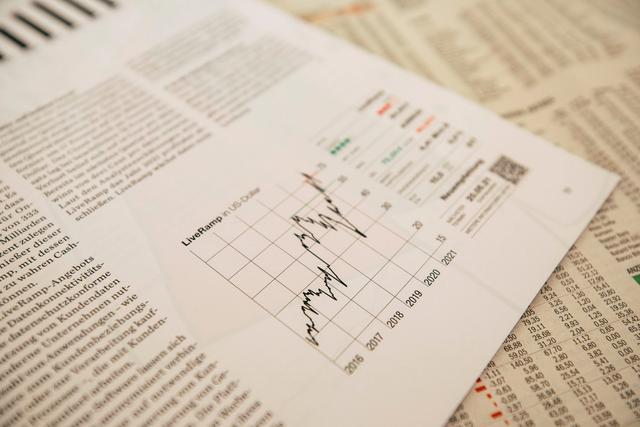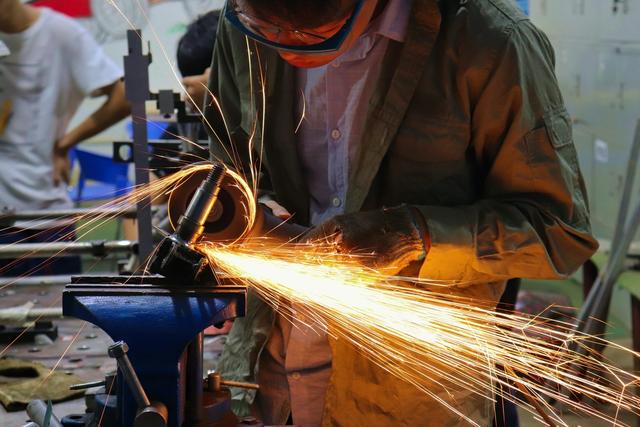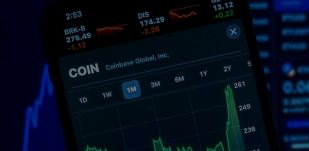
How to Buy and Sell Machinery Abroad and Manage Your Currency Exposure
Reece Dye
Head of Corporate Clients
Brexit and Covid-19 have transformed the global landscape for selling and purchasing machinery and equipment. There is a raft of new regulations in place for exporting and importing machinery and equipment, confusing altered legal statuses and onerous tax changes.
The pandemic has also meant more and more people working from home, often internationally, too, and that has meant changes in manufacturing bases and equipment purchase.
So far, post-Brexit the UK has signed trade deals and agreements-in-principle with 69 countries and one with the EU. In 2021, machinery and vehicles represented the main category of goods imported from China, the UK and the US, according to Eurostat. Businesses will increasingly need to make payments for machinery in other currencies. But increasing this geographical spread means increasing costs of doing business abroad, whether that’s transfer fees, wages or fluctuating exchange rates.
Inherently unpredictable, the foreign exchange market’s fluctuations can significantly impact business competitiveness and cash flow. Global currency markets are moving more than ever before. The Covid-19 pandemic and ongoing Omicron worries have meant that market volatility is at an all-time high. Small and medium-sized businesses (SMEs) find themselves needing to manage currency exposure in a way they’ve previously not quite had to think about before. Moreover, business costs are rising in quite an unpredictable way, along with market movements. This is affecting the already-stressed manufacturing, agriculture, shipping, textile and travel sectors disproportionately.
However, as technology advances at an ever-faster pace, the cycle of buying and selling machinery revolves along with it. Gone are the days of investing in one piece of machinery that would last the family firm for decades, serviced regularly by the same local firm. To compete on a global market, SMEs need to invest in the highest spec kit, keep up to date with the latest developments in their industry and ensure production lines are as streamlined as possible. Moreover, more and more larger companies are starting to accept digital and cryptocurrencies as payment. However, cryptocurrencies and digital currencies are susceptible to vulnerability.
Being aware of and staying ahead of potential currency changes is essential during this process. For example, if you're exporting machinery from the UK to a eurozone country and the euro weakens from €/£1.2 to €/£1.4 your exports will obviously be more expensive when priced in euros. Goods imported will be cheaper in sterling and will therefore start to become more competitive in the UK market.
Join in a few minutes
Key to navigating the international machinery purchasing process successfully is understanding cost price and being able to hedge above cost. Your average machinery sale in the time of Covid and post-Brexit might no longer amount to a simple done-and-dusted transaction. It’s important to take the following things into account:
What is the exchange rate at the time of agreeing the purchase/sale?
This is obviously the bit that determines whether you buy or sell but the fun doesn’t stop there. It’s crucial to take future changes and challenges into account before you proceed with a sale, in order to properly deal with cash flow.

What will the exchange rate be at the time of paying/receiving the balance?
And here’s where the real fun starts. If your exchange rate shifts between you agreeing the sale in a foreign currency and paying or receiving cash, the amount of home currency paid or received will change, and this can impact future cash flow planning. It’s important to find out how long the wait is likely to be between agreeing the purchase/sale and taking delivery. This wait can be affected by a number of factors; the supply chain at the other end of the sale, the readiness of the machinery, the other party’s financial readiness, your own cash flow, the terms of the payment agreement and the shipping arrangements/disruptions.
According to a report from McKinsey, it now costs up to six times more to ship a container from China to Europe than it did at the start of 2019. This, says the report, is down to changing consumption patterns and congestion in ports, thanks to the pandemic, as well as a general reduction in shipping capacity. Bloomberg reports that transporting a 40-foot steel container of cargo by sea from Shanghai to Rotterdam now costs $10,522, some 547% higher than the seasonal average over the last five years. Other estimates suggest that these price pressures won’t ease until well into 2023. All of these costs are things that need to be taken into account before the transaction is agreed.
It’s also a very good idea to try and predict what events are likely to affect the currency rate over the period of time between the sale agreement and the exchange of money. Inflation is the biggest factor to take into account. Earlier in December, The Bank of England’s monetary policy chief, Ben Broadbent, suggested that inflation is likely to rise “comfortably” above 5% next spring and in October the US inflation rate was the highest it has been since the early 1990s. Political stability also affects currency rates dramatically and, it’s fair to say, the last five years haven’t been the most predictable on a global level.
Though recently the US is in a more stable place than it has been previously, the eurozone is facing increasing turmoil thanks to factors such as the end of Angela Merkel's reign, the impending French elections (who knows right now whether Macron will eventually succeed against Le Pen?) and Poland's threats to leave the EU, not to mention ongoing Brexit trade issues, which threaten to rumble on indefinitely.
Moreover, Russia's forces close to Ukraine are showing signs of imminent military conflict and ongoing anti-vaccine protests around Europe are affecting stability in previously peaceful places. Turkey's currency has sunk 45% against the dollar this year and China’s Yuan has recorded highs. It's a confusing and unpredictable time for anyone wanting to rely on political stability for financial transactions.
Access bank beating currency rates
Are the goods you purchase/sell likely to be delayed due to global supply/shipping issues?
In addition to increased shopping costs, ports are recording record shipping delays affecting delivery of key manufacturing components, driver shortages, transportation costs and consumer prices. In addition, factory production has been affected by Covid. In September, China’s factory output shrank, worrying manufacturers around the world reliant on the country’s productivity.

The shipping and supply issues have become so worrying that back in October 2021, President Biden held a global summit on supply chain resilience with the EU and 14 other countries to work together to strengthen supply chains and beat bottlenecks. He also announced that the port of Los Angeles would open around the clock to battle delays, along with the news that companies such as UPS, Walmart and FedEx would increase their working hours to manage the backlog.
However, as well as the current delays affecting global shipping, you could find your own exports and imports subject to unpredictable delays and these need to be taken into account before agreeing a sale price.
How much risk do you want/can you afford/are you prepared to take on during that purchasing/selling period?
International and overseas trade carries with it inherent risk, thanks to uncertainty of timing between exporter and importer. Essentially, any sale remains a gift until the payment is received so, naturally, exporters want to secure their payment as soon as possible. For an importer, any payment is a donation until goods are received, so they, of course, want their products as soon as possible but to delay payment for as long as possible.
Each business and industry faces its own unique risks. You might be aware of all these factors and want to proceed with the sale/purchase anyway but you need to be aware of how much risk you can afford to take on during the purchasing/selling period. A certain amount of risk is inevitable when selling and purchasing machinery abroad but it’s important to ensure you know how much risk you can afford to take on and whether it’s going to be worth it for the sale.
There are several different types of risk a business can face, such as transactional, translational and economic risk. Transactional risk refers to the effect that foreign exchange rate fluctuations can have on a transaction prior to settlement, translational risk refers to the risk associated with businesses that deal in foreign currencies and list foreign assets on their balance sheets (the value of these assets must be converted from the foreign currency to the home country's currency for accounting purposes). Economic risk refers to the risk incurred to the company’s overall market value as a result of currency fluctuations.
It’s worth asking yourself whether you can afford unpredictable profits and losses. Is your cash flow reliant on the sale going through? How will you manage if the sale doesn’t go through as planned? Can you afford to cover supplier payments and contractor payments?
What risk mitigation products are you able to use?
One way to mitigate your currency exposure risks is to use a forward contract. A forward contract is a contract agreement to buy or sell an asset at a fixed price on a fixed date in the future. These are used specifically to deal with currency volatility. Forwards are similar to futures but are private contracts between two parties, while futures are standardised contracts traded on centralised exchanges. A forward contract will protect you in the case of financial or political mishap and allow you to move forward with your purchase or sale by letting you fix a price today for a foreign exchange in the future and the settlement date will be the day you get your currency. A foreign exchange spot contract stipulates that the delivery of the underlying currencies occurs promptly (usually within two days) following a settlement date.

Can you use a money transfer provider?
Many SMEs need to move currency fast to pay for suppliers or receive payments for selling. Money transfer providers, such as Clear Currency, often offer more competitive rates than conventional banks. Whether it’s paying invoices in euros or getting paid in dollars, a transfer provider such as Clear Currency can remove complexity, cut costs and make foreign exchange easy, allowing business owners more time to focus on operational activities. The Clear Currency Platform allows you to pay in multiple currencies from a single account and manage foreign exchange transactions all in one place at a time/rate that suits you and your business. Clear Currency helps protect from the unpredictability of ever-moving currency markets with forward contracts, spot contracts and other structured products designed to take the hassle out of the overseas machinery buying process. Clear Currency can also help you carry out a full review to establish how much risk you are able to take on during the purchasing or selling process.
Over 35 currencies
Related Articles
How to Mitigate Foreign Exchange Risk
Currency risk can have a significant effect on the efficiency and profitability of any international business. Each exchange rate movement affects how much you receive from sales and what you pay to suppliers.
Read more
Moving to Dubai from the UK: Checklist
You’re ready for a new life overseas and have decided you’re moving to Dubai. Now it’s time to consider the various costs involved, from your visa and accommodation, to health insurance, shipping your belongings and bringing your beloved pets along too.
Read more
Currency Outlook Quarter 1 2023
Clear Currency looks back at the performance of the US dollar, euro and sterling in Q4 2022, and assesses what might be in store for Q1 2023.
Read more



